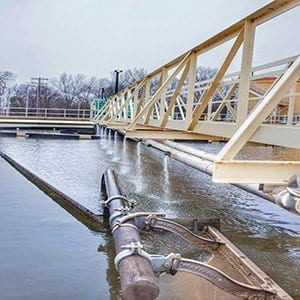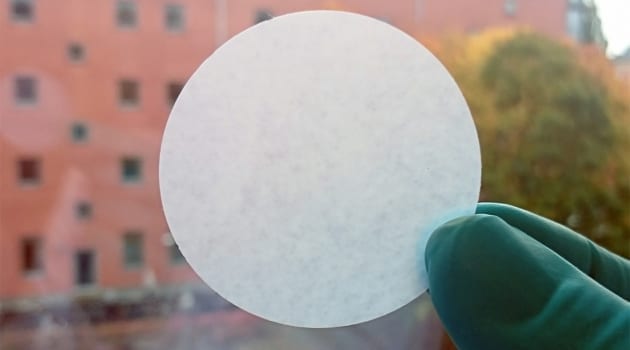A University of Oklahoma-led interdisciplinary global study expands the understanding of activated sludge microbiomes for next-generation wastewater treatment and reuse systems enhanced by microbiome engineering. Wastewater treatment and reuse are critical to global health and sustaining a world population predicted to reach 10 billion by 2050.
“In May 2014, we established a Global Water Microbiome Consortium (http://gwmc.ou.edu) as a way to promote international collaboration and communication on global research and education for water microbiome,” said Jizhong Zhou, OU director, Institute for Environmental Genomics; George Lynn Cross Research Professor, OU College of Arts and Sciences; adjunct professor, Gallogly College of Engineering; adjunct senior scientist, Lawrence Berkeley National Laboratory; and adjunct professor, Tsinghua University.
“Different from several other global initiatives using a bottom-up approach to solicit microbial samples, the consortium used top-down sampling strategy to target the microbiomes of activated sludge processes in municipal wastewater treatment plants that represent a vital element of the infrastructure for modern urban societies. The campaign involved 111 investigators who sampled 269 wastewater treatment plants in 86 cities in 23 countries on six continents,” said Zhou.
This study is novel in several ways: (1) it reports the first comprehensive, highly coordinated effort to examine the global diversity and biogeography of the activated sludge microbiome; (2) it documents a highly diverse activated microbiome, containing up to one billion microbial phylotypes comprise of novel species; (3) it identifies the core global taxa of activated sludge microbial communities that are linked to activated sludge performance; (4) it reveals that the activated sludge microbiome is distinct from microbiomes in other habitats; and (5) it provides an understanding of the mechanisms driving the composition and functions of the activated sludge communities.
Each day wastewater is treated by an activated sludge process in municipal wastewater treatment plants and returned to the environment for use. This treatment process has been used for over a century and today represents the largest application of biotechnology in the world, yet there has been no effort to map the global activated sludge microbiome. Developing a fundamental understanding of the biodiversity of the activated sludge microbiome in relationship to performance is critical to advancing and optimizing this key technology for maintaining environmental health.
“This unprecedented global sampling effort yielded new insight into the microbiology of activated sludge,” said Bruce Rittmann, director, Biodesign Swette Center for Environmental Biotechnology, Arizona State University. “Despite giant geographic differences, the microbial communities of activated sludge have a core of about 28 bacterial strains, which reflects the powerful and unique ecological selection of the activated sludge process.”
“This expansive study is the first time that a systematic study of the hugely beneficial microbial communities involved in the biological treatment of daily wastewaters from communities around the world have been studied to understand their fundamental structure and function has been undertaken. It represents an important development in understanding and maintaining these crucial microbial communities,” said Lisa Alvarez-Cohen, Fred and Claire Sauer Professor, University of California Berkeley, and adjunct senior scientist, Lawrence Berkeley National Laboratory.
The Latest on: Activated sludge microbiome
[google_news title=”” keyword=”activated sludge microbiome” num_posts=”10″ blurb_length=”0″ show_thumb=”left”]
via Google News
The Latest on: Activated sludge microbiome
- Insights into Antibiotic Resistance Through Metagenomic Approacheson April 20, 2024 at 5:00 pm
Large-scale sequencing projects such as the HMP and MetaHIT have been started as part of the International Human Microbiome Consortium ... and antibiotics. Activated sludge showed evidence for ...
- Oral microbiome and cancer: A closer look into the intricate interplays of the mouth's hidden worldon April 3, 2024 at 4:55 pm
This highlights the importance of considering the spatial microbiome as well as the vicious circle of the interplay between bacteria and fungi, when studying oral carcinogenesis. Professor ...
- What Is the Gut Microbiome?on April 2, 2024 at 4:59 pm
While it may not be the most pleasant thing to think about, our bodies harbor communities of bacteria and other microorganisms both inside and on our skin. These microorganisms, also known as ...
- News tagged with gut microbiomeon March 27, 2024 at 5:01 pm
Like their multifaceted and beneficial role in humans, the role of the gut microbiome in maintaining health, behavior, and ecology ...
- The Superior Gut Microbiome of Grey Squirrels May Explain Their Domination Over Red Squirrelson February 14, 2024 at 8:13 pm
Scientists have uncovered that the gut microbiome might explain why grey squirrels have an edge over their red counterparts. Introduced from North America in the late 19th century, grey squirrels ...
- New Research Links Long Covid And The Microbiome. Probiotics May Be An Answeron December 21, 2023 at 7:50 am
Alterations in the gut microbiome also may be a cause. The gut microbiome, the collection of microbes that reside within our gastrointestinal tract, clearly contribute to our general health and ...
- Microbiome Centeron August 10, 2022 at 7:36 am
The UAB Microbiome Center works to ensure that vital cores necessary to perform microbiome-related work are accessible to investigators at UAB. The Microbiome Center promotes new and established ...
- How the microbiome affects human health, explainedon October 18, 2021 at 2:52 pm
The term “microbiome” is shorthand for the vast and still largely unexplored worlds of bacteria, viruses, fungi and other microorganisms that inhabit every corner of the planet. Bacteria form tiny ...
- The Human Microbiomeon May 23, 2021 at 2:49 pm
The human microbiome, or microbiota ... to watch and measure the change from normal to aberrant signaling using fluorescent sensors that are activated by important signaling molecules, such as Ca 2+ ...
- Human Microbiome Projecton December 18, 2020 at 6:52 am
The goal of the Human Microbiome Project is to characterize the human microbiome and analyze its role in human health and disease. Although bacteria are often associated with infections, the bacteria ...
via Bing News











